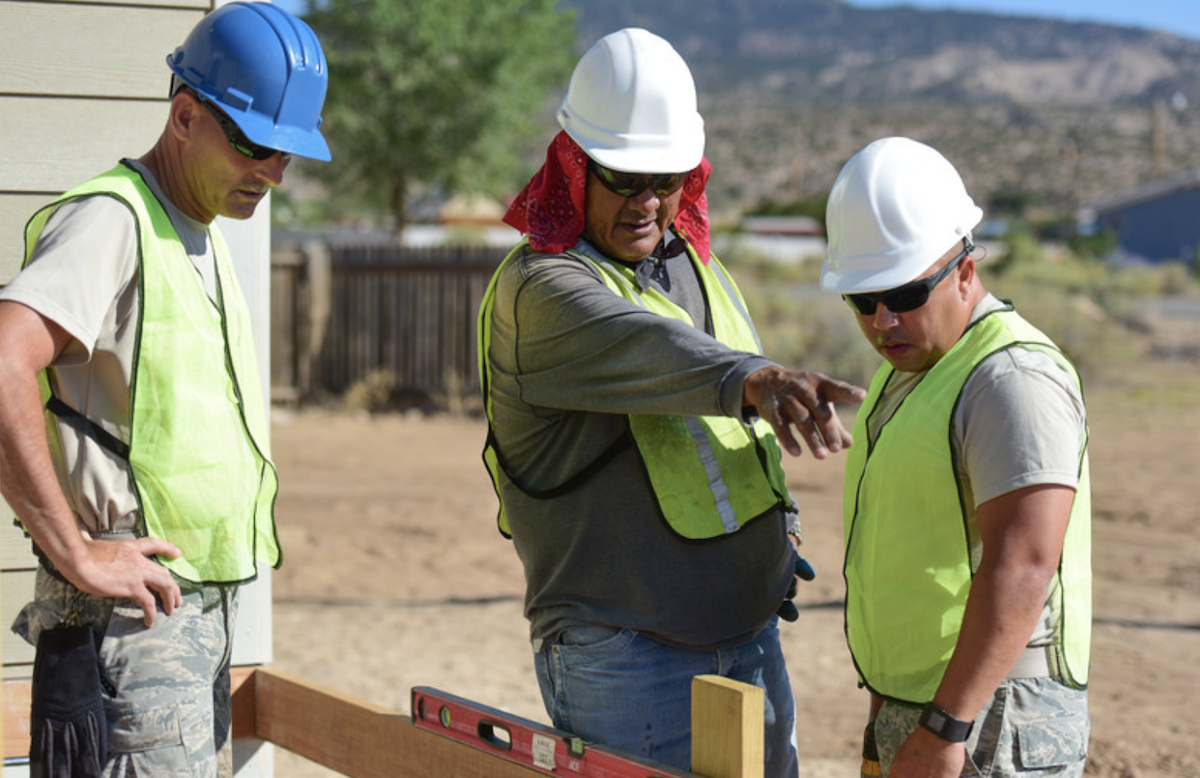This article has been revised and updated since its original publication date of March 30, 2008.
Whether you're starting a home building company or your business is already well established, it's always instructive to get solid advice from mentors and seasoned industry pros who've seen what works—and what doesn't. Sure, you can follow your own instincts and gut feelings, but those who are most successful in business have had mentors to both encourage them and to warn them of pitfalls and lessons learned from the school of hard knocks.
Experience is an expensive asset, but it's essential to business success. And, while most articles will tell you what you should do to improve your business (Pro Builder also offers plenty of those), we've decided in this article to take a different tack and let you know what not to do in your home building business.
8 Areas Where Home Builders Go Wrong in Business
We turned to home building industry experts Chuck Shinn, Scott Sedam, John Rymer, and others for input, and assembled this list of 30 mistakes to avoid. But the list represents just a sampling of their recommendations. (Believe us—they could go on!)
Our experts identified eight key areas where home building companies go wrong:
- Attitude
- Suppliers and trades
- Land
- Systems, processes and communication
- Money
- Sales
- Build
- Design
Read on to find out specifically how builders go astray in each of these categories.
Attitude
1: Allowing the market to affect your home building company's character
Industry expert Charlie Jenkins chalks up things such as poor decisions on land purchases and compromises on hiring decisions to a good-looking market. Once the market turns the other direction, however, everyone sings a different song. "There is no substitution for good business character," Jenkins says. "The ideals, standards, and values we base our company strategies on should make sense in a good market as well as a bad market."
Suppliers and Trades
2: Not having a purchase-order system
No PO system means no agreement of trade cost or specific house information in advance. Do your home building company a favor and get yourself organized.
3: Jobs not ready for trades
If your jobs aren't ready for the trades, you're setting yourself up for a big problem. Try dry runs for trade contractors.
4: Paying trades too early
Pay your trades too early and you may not get them to finish the job, which creates a need for punch-out people, says consultant Chuck Shinn—and that leaves you to pay for the work twice.
5: Leaving money on the table by pulling all suppliers and trades through the same cost-reduction knot-hole
Scott Sedam, of TrueNorth, recommends against a one-size-fits-all approach to cost-savings in the trades and suppliers department. You're "killing a loyal trade" with that tactic, he says.
6: Continually hammering suppliers and trades to rebid and cut margins
You're better served working cooperatively to eliminate waste in product and process.
7: Not checking in on the purchasing department
Although Purchasing is usually great at negotiating the best price, Sedam says, it doesn't hurt to challenge your purchasing departments to show you documentation that they're not only negotiating for the best trades by those criteria but also for the best crews.
8: Holding on to your trades and suppliers out of comfort
Says consultant Chuck Shinn: "[Builders are] wed too closely to current trades and vendors." Maybe it's time for a trial separation. We're not saying leave them all together, just give someone else a shot. Repeat after us: "There are no sacred cows."
Land
9: Too much land inventory
Use the market recession to develop a land strategy.
10: Buying land outright
When you buy land, have a due-diligence period and a take-down schedule.
11: Paying too much for land
Shinn recommends builders work backward from house sales price and keep land within market ratios of sales price.
Systems, Processes, and Communication
12: Lack of systems and procedures in your home building company
Form a team and begin to create standard operating procedures for your company if you don't have them already. If your systems aren't documented, they don't exist.
13: Inefficient and ineffective systems and processes
You may have systems and processes in place, but do they work? Shinn recommends analyzing, documenting, and streamlining processes for maximum impact. Often you'll find a lot of duplicate efforts.
14: Lack of discipline
Your policies and procedures are only good if they are being followed by everyone in the firm. Hold your employees accountable if they don't fulfill their responsibilities.
15: Poorly integrated management process
Each man may be an island but your departments shouldn't be. Urge your management team to get behind integrating the whole company. How? Implement management software; create a central repository for information, spreadsheets, and reports; and stop duplicating work.
16: No strategic plan
Do you know where you want your home building company to be in three to five years? Stay on course by developing a strategic plan. Shinn describes a good strategic plan as a written plan that helps guide decisions and actions. It should be reviewed and updated at least annually and should be used, not just put on a shelf or given to lenders.
17: Poor communication
Nothing will tire your staff quicker than a lack of communication. Keep the lines of communication open both to and from the management level. You'd be surprised how responsive your employees will be if you keep them in the loop. Provide clear direction and they'll be yours forever.
18: Lack of staff training
Would you want your next CEO to come straight out of high school? If you've dropped new staff orientation programs to save a buck, you might as well start recruiting your C-suite from the playground. You'll save money in the long run by retaining "perks" such as job training—both new-hire and continual education—as well as orientation and advancement opportunities.
Money
19: Not treating land and home building as separate profit centers
The dynamics of land and home building are quite different, says Shinn. Too many firms "subsidize inefficient home-building operations with land appreciation." Land is a very liquid asset; don't dry up your cash reserves by keeping your land and home building operations in the same bucket.
20: Pricing homes on cost instead of the market
Make sure you're doing your market research before you start building your million-dollar masterpieces. The local market will set the sales price of your homes, not the cost of the goods used. Direct construction costs, not profits, are the only variable in the pricing formula.
21: Never giving the level of attention to a new community startup that is given to sales, finance, and production
"There is more money bled out on the ground in the community start-up process—from signing a land contract to opening the first model for sales—than anywhere else in home building," Sedam says. If you're starting a new community, conduct a true value-stream analysis on your startup process and then create a sensible, streamlined process and thoroughly implement it.
Sales
22: Lack of good sales training
Sales training hits to the heart of selling your homes. Take a good, hard look at your sales training: can your sales team demonstrate the home and its products? Are they asking the right questions? If the answer is no, then it's time to retrain your sales team.
23: Not knowing your customer
Do you know your customer or just think you do? If your entry-level options are appealing more to the empty-nester crowd, reconsider your customer profile and act accordingly. Sales expert John Rymer recommends paying close attention to your customers' wish lists. "Whatever the last three customers were asking for ... everyone [will] want."
24: Having an uncontrolled selection process
If you've been sending customers to vendors or using allowances instead of baseline specifications, now is the time to stop. Shinn suggests taking control of the process by setting time frames, offering guidance, and packing selections, thereby lessening the confusion for your customer.
25: Mismanaging HOA transitions
Too many builders and developers with homeowner associations are notorious for mismanaging the transition to homeowner rule, says Stuart Teicher, SVP and general counsel at the Teicher Organization. The results can go behind the typical wear-and-tear fixes and turn into more catastrophic problems such as negative publicity from HOAs.
Build
26: Not having a master schedule
Don't leave your build schedules up to chance—or to your individual superintendents. Not having a master schedule will leave you with too many phone calls, no consistency, and no way of notifying trades and suppliers of what's going on.
27: Inadequate construction planning
Don't be in such a rush to reach the construction phase. Opening a community without finished plans and specifications or starting individual homes without complete information will lead to inaccurate purchase orders.
28: Not doing internal inspections
Are you conducting critical point inspections? You should be. Shinn advises three to five detailed internal inspections with the ultra-critical internal final inspection prior to the customer walk.
Design
29: Poor product design process
This no-no is a first cousin to mistake No. 23: Know your customer. Stop designing homes you want to live in and start designing homes your customers want. Our experts agree: You can't forget to include your estimators and production teams in the process; they'll know what you don't.
30: Inadequate construction drawings
If your third-grader can read your construction drawings, you've got some work to do. Lack of details and no consistency leave a lot of room for error and interpretation, says Shinn. "Trades and supers haven't been asked for input on what they need, nor is there a scope of work for architects." Be kind and refine.
Our Experts
- Chuck Shinn Jr. of Shinn Consulting has been a consultant and industry educator since 1975. He has a doctorate in business management and has improved the management skills of home builders to increase their profits, quality, and customer satisfaction.
- John Rymer is the founder of New Home Knowledge, which offers sales training for new-home builders and real-estate professionals.
- Scott Sedam is president of TrueNorth Development, a nationwide consulting and training firm focused on quality, process improvement, and organizational development and is a frequent contributor to Pro Builder.
- Stuart Teicher is SVP and general counsel at the Teicher Organization, in East Brunswick, N.J. The company develops residential and commercial projects throughout New York, New Jersey, and Pennsylvania.
- Charlie Jenkins is a national sales trainer and sales coach at New Wings Consulting and is a former VP of sales training for Ryland Homes.













